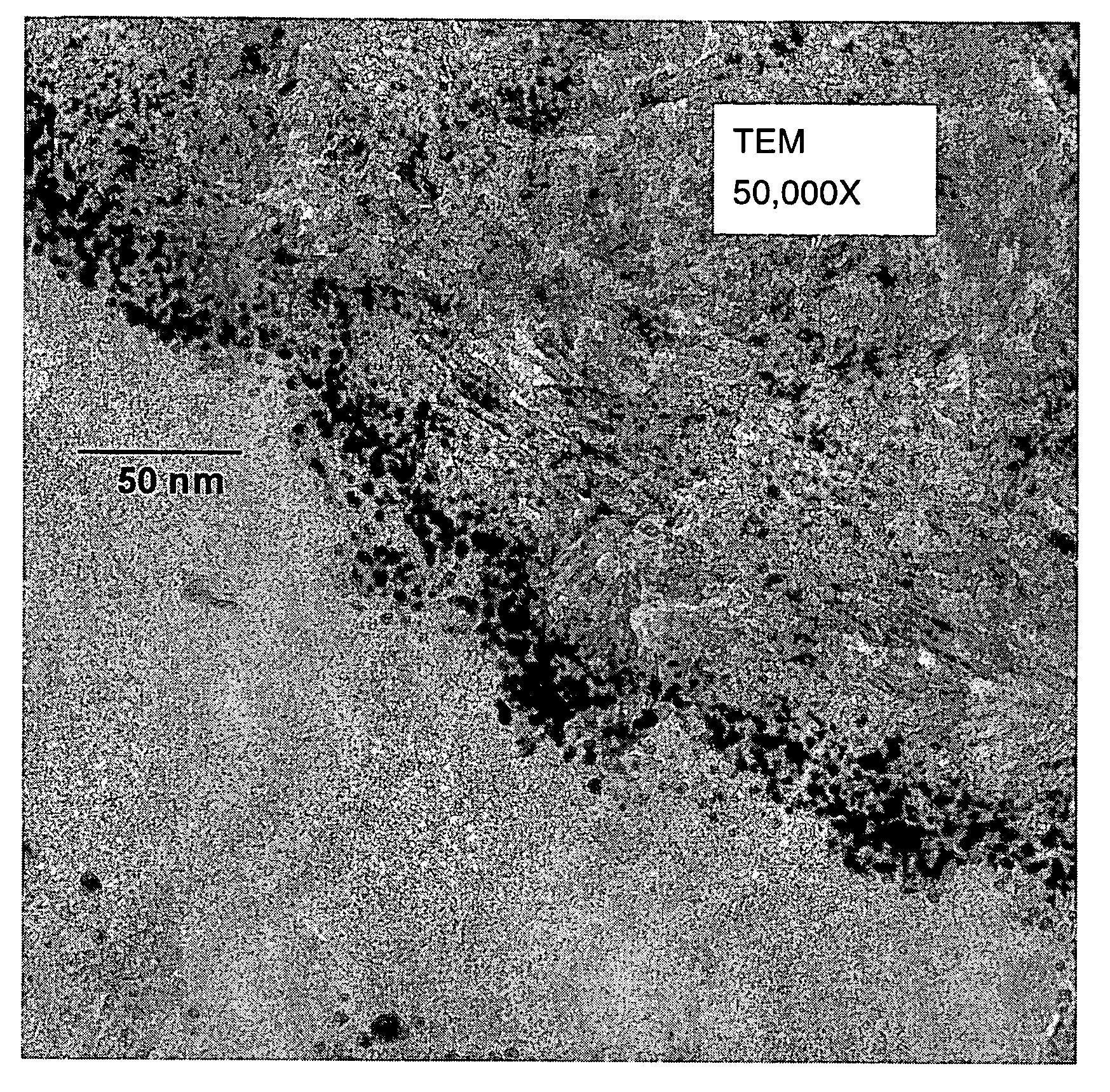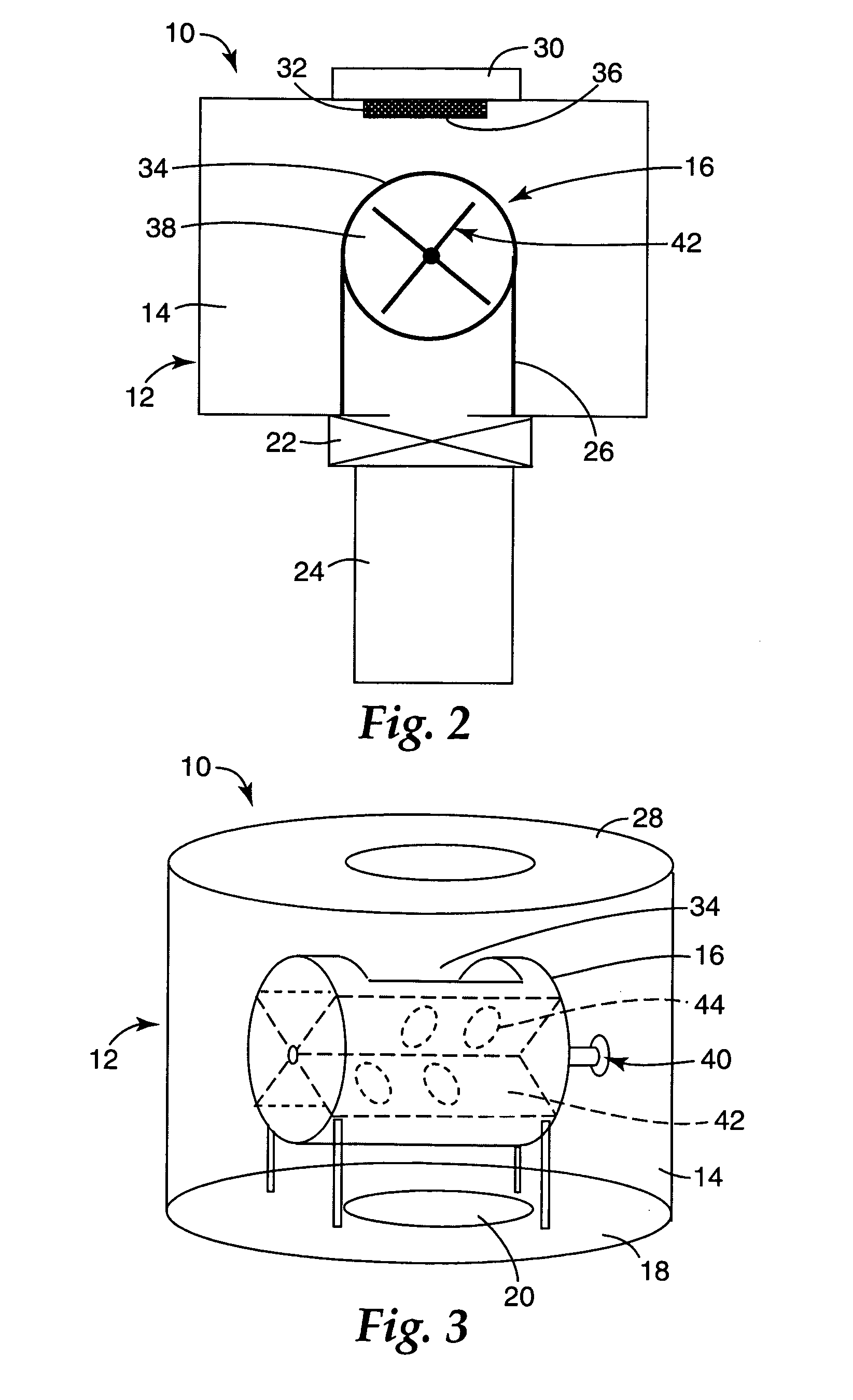Catalysts, activating agents, support media, and related methodologies useful for making catalyst systems especially when the catalyst is deposited onto the support media using physical vapor deposition
a technology of catalysts and activating agents, applied in the field of gold-based catalyst systems, can solve the problems of loss of performance and underutilization of nanoporous media, and achieve the effect of dramatically facilitating the use of catalytically active gold and enhancing the performance of catalytic systems
- Summary
- Abstract
- Description
- Claims
- Application Information
AI Technical Summary
Benefits of technology
Problems solved by technology
Method used
Image
Examples
example 1
Type A Gamma Alumina Particles
[0181]Type A gamma alumina particles were treated with gold by plasma-assisted sputtering as previously described using deposition condition 2. The performance of the CO oxidation catalyst of example 1 in oxidizing CO during gas flow through a bed was measured using test method 1. The CO challenge was 3600 ppm CO and the total gas flow rate was 64 liters / min. The gas was at 85% relative humidity. The results are represented in FIG. 6. FIG. 6 and other similar graphs in these examples display measured gas concentrations in ppm versus time of testing after test gas mixture is passed through a 100 ml test bed. The elapsed time is represented in minutes:seconds:tenths of seconds.
example 2
Un-Modified Type B Gamma Alumina Particles
[0182]Type B gamma alumina particles were treated with gold by plasma-assisted sputtering as previously described using deposition condition 2. The performance of the CO oxidation catalyst of example 2 in oxidizing CO during gas flow through a bed was measured using test method 1. The CO challenge was 3600 ppm CO and the total gas flow rate was 64 liters / min. The gas was at 85% relative humidity. The results are represented in FIG. 7.
Impregnation of Gamma Alumina Particles:
[0183]A solution of the impregnation liquid was prepared by mixing sufficient soluble salt of the impregnation metal with deionized water in sufficient quantity to generate a solution having the desired concentration. As an example, to prepare a 0.5 M solution of potassium carbonate (FW=138.21 g / mole), 69.11 g of potassium carbonate was dissolved in sufficient deionized water to yield a final volume of 1 liter.
[0184]The particles were impregnated by incipient wetness. The ...
example 3
Preparation of Potassium Carbonate Impregnated Gamma Alumina Particles—Sample Heated to 130° C.
[0185]710 g of gamma alumina particles A (950 ml volume of gamma alumina particles) was impregnated by the incipient wetness technique using a 0.5 M K2CO3 (Merck KgaA, Darmstadt, Germany) solution. After an addition of 469 ml of the 0.5 M K2CO3 full saturation was achieved. This results in a catalyst support, after drying that is about 2.5% by weight potassium. The particles were dried at 130° C. and a 300 ml portion of this sample was treated with gold (deposition condition 2).
[0186]The weight percent gold on this sample was measured by Inductively Coupled Argon Plasma Spectroscopic Analysis (ICP). The results for replicate samples were 0.0486 wt % gold and 0.0521 wt % gold.
[0187]A sample from Example 3 was examined by TEM as previously described. The approximate size range of Au particles in an undulating region that appeared to be representative of the sample was 2.1 to 6.6 nm. The aver...
PUM
 Login to View More
Login to View More Abstract
Description
Claims
Application Information
 Login to View More
Login to View More - R&D
- Intellectual Property
- Life Sciences
- Materials
- Tech Scout
- Unparalleled Data Quality
- Higher Quality Content
- 60% Fewer Hallucinations
Browse by: Latest US Patents, China's latest patents, Technical Efficacy Thesaurus, Application Domain, Technology Topic, Popular Technical Reports.
© 2025 PatSnap. All rights reserved.Legal|Privacy policy|Modern Slavery Act Transparency Statement|Sitemap|About US| Contact US: help@patsnap.com



